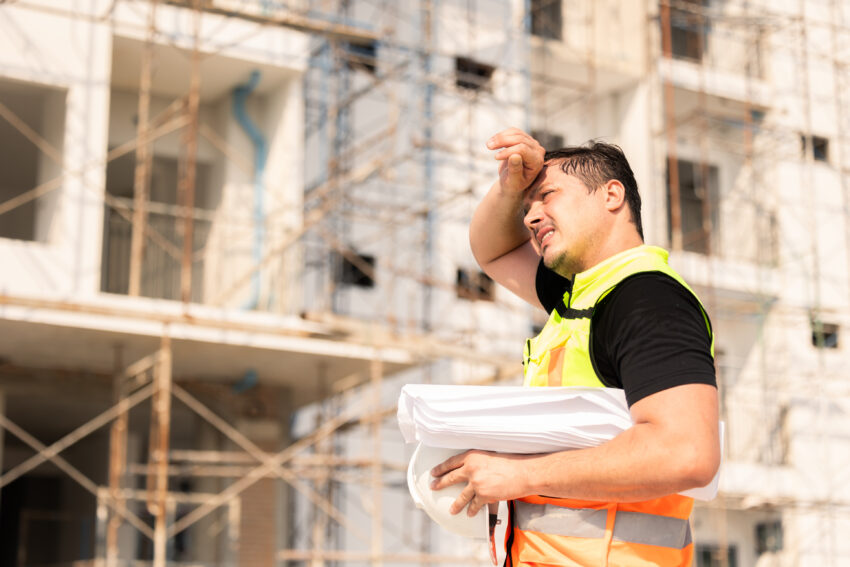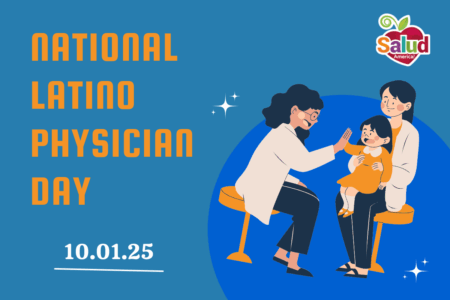
Share On Social!
Year after year, scorching temperatures rock countries across the globe.
With the last few summers some of the hottest on record, weather and health experts alike are warning people about the dangers of prolonged exposure to heat.
The World Health Organization (WHO) and the World Meteorological Organization (WMO) are advising individuals, organizations, and companies on how to navigate the heat waves.
The latest guidance and report issued by the organizations focuses on the health and safety of manual laborers, particularly outdoor workers, who are exposed to heat conditions.
“Heat stress is already harming the health and livelihoods of billions of workers,” said Dr Jeremy Farrar, WHO Assistant Director-General, Health Promotion, Disease Prevention and Care. “This new guidance offers practical, evidence-based solutions to protect lives … and build more resilient workforces in a warming world.”
Here are four takeaways and recommendations from the report you should be aware of when temperatures are at their highest.
1. Heat Effects People Around the World
Despite the frequency of US headlines involving extreme heat, high temperatures are affecting everyone, including those living outside of the US.
In fact, the report details that the “frequency and intensity of extreme heat events have risen sharply,” thus increasing the danger for those exposed to it, including some of the most exposed people, such as outdoor workers.
What’s more, approximately half of the population around the world experiences adverse health conditions from exposure to extreme heat, according to the report.
Health risks include heatstroke, dehydration, kidney dysfunction, and neurological disorders — some of which can be long-term health problems.
2. Occupational Heat Stress Is a Prevalent Issue Globally
The people most impacted by extreme heat are those who can’t escape it. They’re exposed because of the type of work they do.
There are more than 2.4 billion of these workers around the world, according to the International Labour Organization (ILO) cited by the report.
Every day they are on a job site, they are putting themselves at risk. But there aren’t overarching protections for these workers, and it’s often left up to the discretion of corporations and site managers.
Some of these entities believe that providing protections may hinder work productivity, but in reality, “worker productivity drops 2-3% for every degree over [68 degrees],” according to the report.
With temperatures scorching into triple digits, worker productivity dips by over 80%.
“Occupational heat stress has become a global societal challenge, which is no longer confined to countries located close to equator – as highlighted by the recent heatwave in Europe,” said WMO Deputy Secretary-General Ko Barrett. “Protection of workers from extreme heat is not just a health imperative but an economic necessity.”
According to ILO, excessive heat conditions result in 22.85 million occupational injuries every year.
3. Take Steps to Ensure the Health and Safety of Outdoor Workers
To address some of these occupational hazards, the report suggests a series of actions.
First and foremost, occupational entities should create plans that take weather patterns, specific jobs, and exposed worker populations into account.

These exposed populations include middle-aged and older workers, people with chronic health conditions, and workers with lower physical fitness.
Second, more attention should be paid to educating and raising awareness for first responders, health professionals, employers, and workers.
These individuals should be equipped to recognize and handle heat stress symptoms to prevent worker death.
Working together with trade unions, health experts, and local authorities can also enable the creation of heat-health strategies that are relevant to those who need them most.
Solutions to heat issues aren’t simple, but they should also be effective, practical, affordable, environmentally stable, and enforceable.
Some of these solutions could include the use of adopting technology to balance productivity while prioritizing the health of workers.
Lastly, more work needs to be done to perfect these strategies. Therefore, more support for research and evaluation must be conducted.
4. Addressing Extreme Heat Can Help Close the Gap on Living Inconsistencies
Those who feel the heat most are from overlooked backgrounds, impoverished areas, and other exposed populations, such as the homeless.
These inconsistencies are compounded by the fact that many of these individuals also work in industries and fields where outdoor work or extreme heat conditions are common, such as construction and farm work.
Addressing extreme heat is important, especially in areas that are more exposed heat, such as urban heat islands. These are areas that are warmer due to the significant number of buildings and roads that absorb and retain heat.
Following these guidelines not only helps protect workers from the heat, but it may also help reduce poverty and promote sustainable economic growth.
“This guidance serves as a vital tool to help countries respond decisively, protecting lives, livelihoods and economies from the growing threat of extreme heat,” according to WHO.
Improve the Health of Workers Where You Live
How is the state of health in your community?
What about its outdoor workers?
Learn about the head conditions where you live by downloading a Salud America! Health Report Card for your town!
Enter your county name and get auto-generated local data with interactive maps and comparative gauges on several health indicators. This can help you visualize and explore local issues in education, housing, transportation, food, health, and more.
See how your county stacks up compared to the rest of your state and nation.
Then email the Report Card to local leaders to raise awareness, include the data in a presentation or grant proposal, or share it on social media to drive healthy change in your community!
Explore More:
Healthy Neighborhoods & CommunitiesBy The Numbers
1
Supermarket
for every Latino neighborhood, compared to 3 for every non-Latino neighborhood



